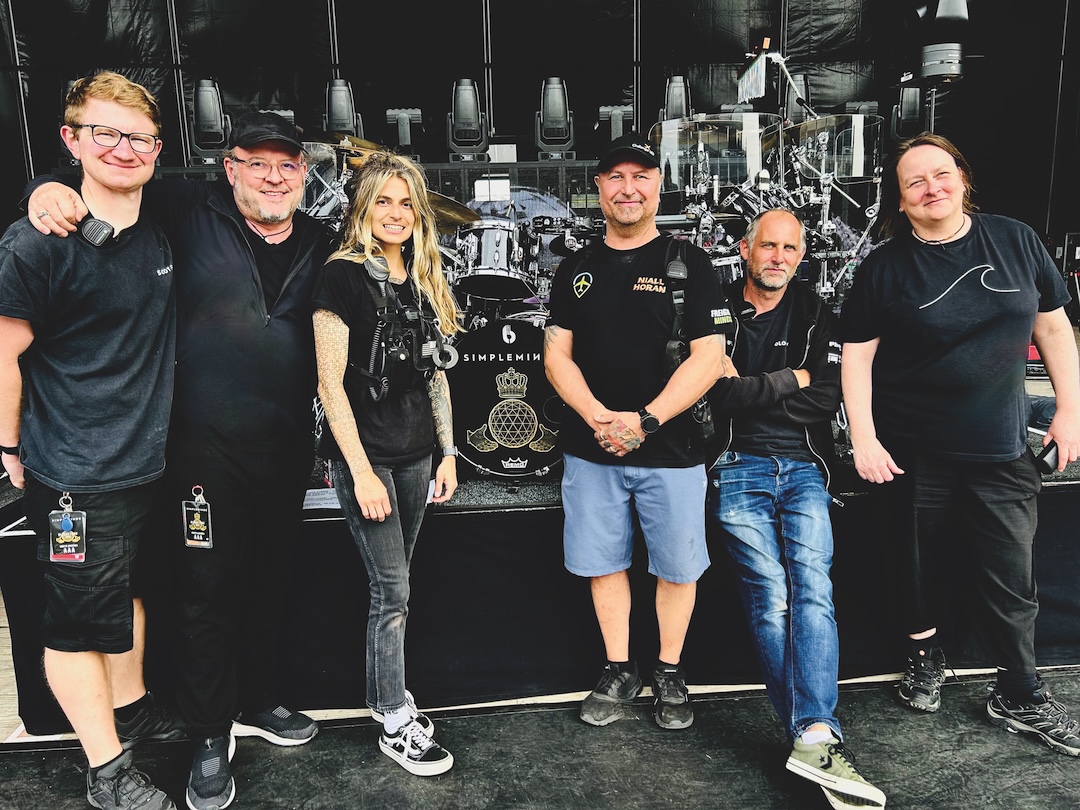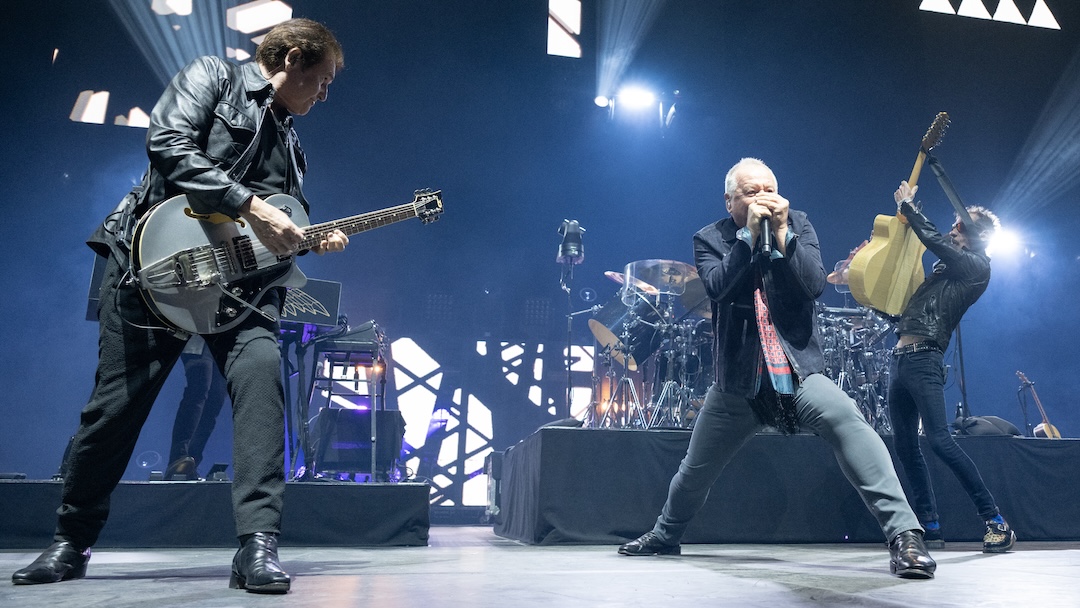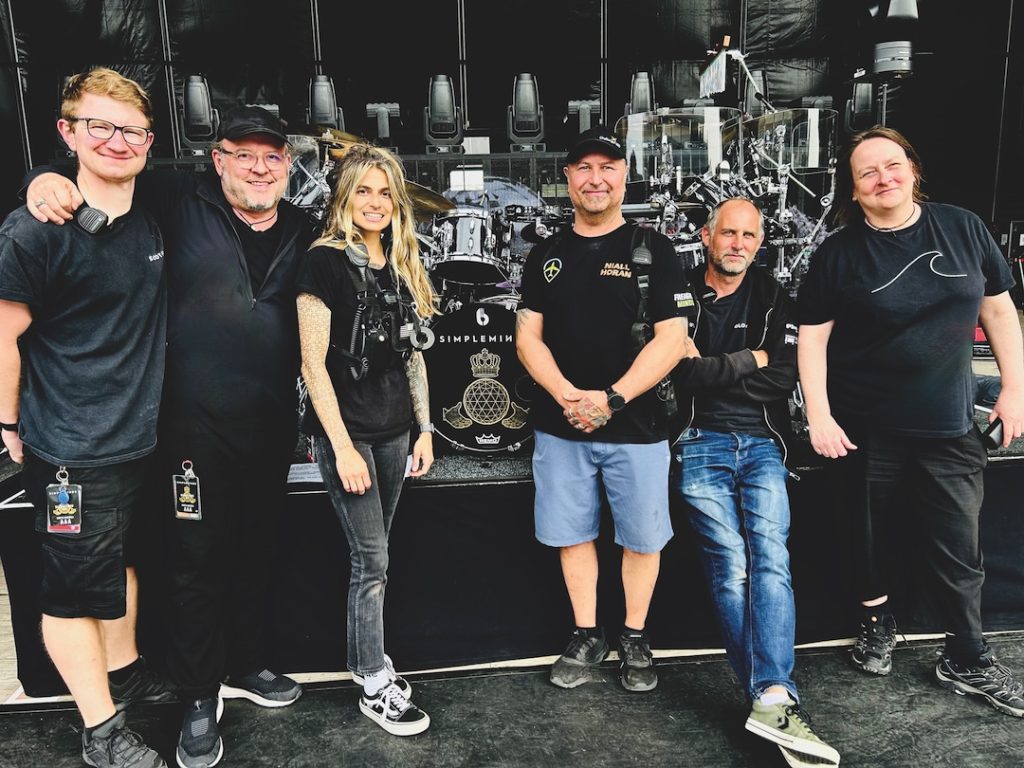New York, NY (August 5, 2025)—1985 was a good year to be in Simple Minds. The Scottish rockers played for 1.9 billion people at Live Aid. They recorded their biggest album, Once Upon A Time, with Jimmy Iovine and Bob Clearmountain, spinning out three Top 40 hits from it. And above all, kicking off that year, they released the soundtrack single that finally broke them wide open in the U.S.—the still omnipresent “Don’t You (Forget About Me).”
As it turns out, 2025 is a pretty good year to be in Simple Minds, too. Still an ultra-tight live act four decades later, the group hit North America this summer to mark Once Upon A Time’s anniversary with a rare 26-date tour—the band’s biggest run here since, well, 1985. Moreover, the journey saw the group play its largest U.S. venues ever, packing sheds and arenas with fans ready to hear the feedback-laced guitar of Charlie Burchill and adamant bellows of frenetic frontman Jim Kerr.

Along for the ride were FOH engineer Olivier “GéGé” Gerard and monitor engineer Jac Nott, overseeing gear sourced from multiple branches of production tech provider Solotech. While video, lights and the tour’s d&b audiotechnik P.A—GSLs for main hangs and KSLs for side hangs, all bolstered by GSL Subs—came from Solotech’s North American arm, the band opted to ship over its usual audio control gear, provided by Solotech U.K.
As a result, Gerard had his familiar Solid State Logic L200 Plus Live console at the FOH position, enclosed in a ProX ZCase flip-out hydraulic flight case. While he handled the show’s delays, choruses, doubling, multibands and dynamics inside the desk itself, a number of crucial outboard units also made the trip in an adjacent rack.
“I’ve been working with Simple Minds since 2008, and since then, I have programmed drum reverbs for nearly every song in the TC Electronic Reverb 4000,” he explained. Similarly, the vocal outboard units were simply a BSS 901 and an Empirical Labs Distressor, while the bass went through another Distressor and a Tube Tech MMC1A multiband compressor. Rather than dive into emulations on the console, he said, having the physical units within arm’s reach meant “I just turn my right hand and I have it under control in a split second. The music of Simple Minds is very bass-driven, so I have to make sure that the bass stays readable; every song, I check to make it clearer or to compress more low end to keep it in front.”
Sparks Go ‘MAD’ in the Studio
Songs like “Alive and Kicking” are straightforward enough when it comes to live mixing, he said, but some remain unpredictable, like the title track to 1982’s New Gold Dream album. “That is like a mystery, because on the album, it’s so simple and obvious,” said Gerard. “It’s a drum machine, a couple of keyboards, guitar, vocal and bass, but those elements are like a fine recipe, and if one element is not placed right, then the song doesn’t work. The atmospheric sounds and soundscapes are always a challenge, especially in venues with difficult acoustics, because there is a big kick drum on each beat. That’s a very complicated one to do.”
Many of those atmospheric sounds stem from Burchill’s guitar work, filling songs with billowing swells of effects. The guitarist heard them differently on the U.S. run, however, as he gingerly switched to in-ear monitors. “To move anyone from wedges to ears takes time,” said Nott. “I never want to be pushing ears; I want to be the person that if you want to do this, I’m here behind you all the way and I’m not throwing you in at the deep end. He seems to be finding it fun, being able to hear all his effects so clearly; once we hit festivals, when he walks down those thrusts, I think that’s when he’ll be really chuffed, because for years, he’s walked down them with nothing and now his sound will go with him.”

Nott, in her second year mixing the band’s monitors following years on the road with Gary Numan and Placebo, oversaw a DiGiCo Quantum 338 console running Pulse software. Mixes were sent to Sennheiser SR2050 RF units, with the seven bandmembers variously wearing Ultimate Ears UE18 and 64 Audio A12t earpieces. Nonetheless, a few d&b M2 wedges still graced the stage to move some air for bassist Ged Grimes and allow Burchill to create feedback when needed. Plus, Nott joked, “When you’ve got a vocalist who is as active on stage as Jim is— he’s everywhere—you can’t remove the wedges, otherwise he’ll have nothing to sit on!”
The tour carried Shure Axient Digital systems with a half-dozen AD2 handhelds and 14 AD1 beltpacks. While backing vocals were captured with DPA 2028s, Kerr stuck with the tried-and-true Shure Beta 58a. All guitars were played through Kempers, while drummer Cherisse Osei was captured via a mix of DPA, AKG, Audio-Technica and Shure microphones, though Gerard particularly praised the kit’s multiple Earthworks DM20 Gen 2 mics: “They are very sturdy and make your toms pop out of the mix; it is a fantastic drum mic.”
Discover more great stories—get a free Mix SmartBrief subscription!
Those mics got to shine every night during Osei’s showstopping drum solo. “I mute all the instruments and leave her to do her thing,” said Gerard. “The drum sounds big, but that’s because she plays very, very big. There’s a reverb, and I follow her intention to maybe put an accent on a drum at some point, but she’s producing the sound of the drum solo.”
Meeting the expectations of both the artists and the crowd is the most important part of the job for the FOH engineer. “I’m passionate about my work,” Gerard confirmed. “With a fan base like this, it’s the soundtrack of their lives and I owe it to them to do the best I can. I’m very, very picky on the reverbs, and I try really hard to get as close as possible to ‘the code’ of the songs: the key elements that you cannot miss if you want to reproduce the song’s emotional value. If the band starts ‘Don’t You’ and it’s roughly in the ballpark, the audience will say, ‘Oh good’—but if I have the right sounds and the right color, their brains explode! They feel like they’re 17 again in a split second, and that is what I’m after—to emotionally transport the audience.”

